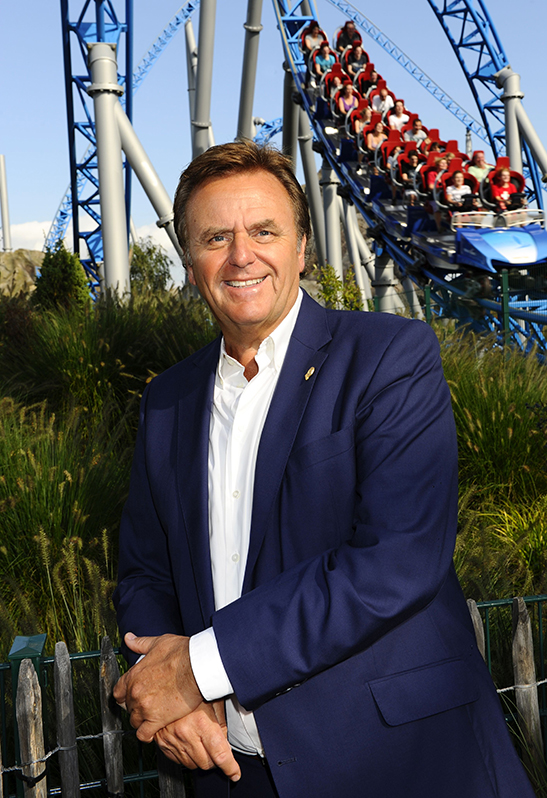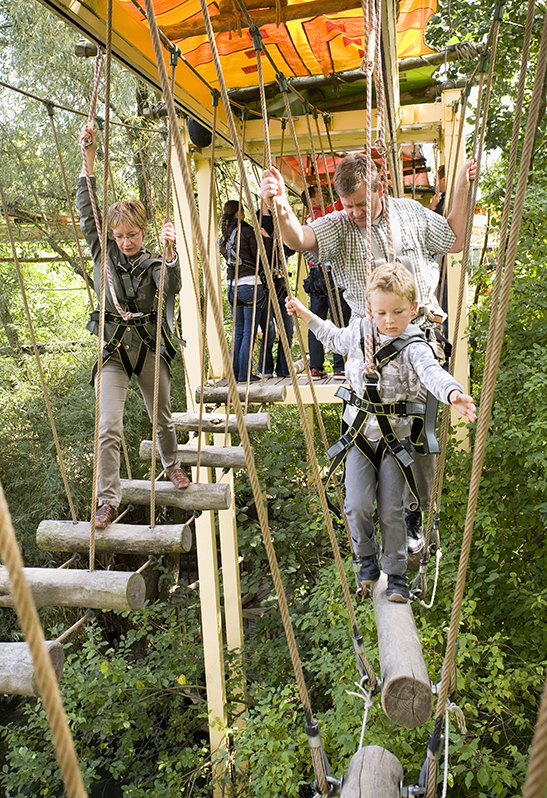Eco-friendly fun at Disneyland
Modern theme parks are all about an industrialized pursuit of adventure, an escape from the everyday—and incredibly high levels of energy consumption. Sustainability is a relatively new focus in this sector but has already become an issue of vital importance.
Imagine that you’re looking out the window of a plane on a relaxing flight over Florida when your gaze suddenly comes to rest on a familiar figure. Way down there in the great expanse of green, you can make out a round head with two large ears. ‘It can’t be…’, you think to yourself—but it is! No less a figure than Mickey Mouse himself, greeting you from afar! At first glance it looks like a fun tribute to one of the world’s most famous cartoon characters, but then you realize that you’re actually looking at a gigantic PV system.
Focusing on renewable energies at an early stage
The Walt Disney Company isn’t just known for its “Hidden Mickeys”, or representations of Mickey Mouse that have been subtly inserted into a ride or product at a Disney theme park. The company is also an early adopter of photovoltaics, and has been installing solar panels in its theme parks since the early 1980s.
That being said, sustainability wouldn’t necessarily be the first word that comes to mind at the mention of theme parks. You’d be more likely to think about spectacular water slides and breathtaking roller coasters that consume incredible amounts of energy, fast food served in disposable containers and a greed for space that comes at the expense of nature.
Despite this, there is a growing awareness that vital resources are scarce and we need to use them wisely. This shift in attitudes has made sustainability a key issue in the leisure industry as well. Many theme parks are actively working to roll out green measures with the aim of downsizing their environmental footprint and saving on energy costs.
The PV installation in the shape of Mickey Mouse’s head that you spied from the window of the plane went into operation at Walt Disney World Resort in Orlando, Florida, in 2016. This system consists of 48,000 solar panels with an output of 5 megawatts. While that’s a respectable size it’s nothing compared to the 50-megawatt system that is currently in the works nearby, covering an area measuring nearly 100 hectares (247 acres). This system is slated to go into operation soon and will serve as the sole source of electricity for two of the four Disney theme parks in Florida, while saving roughly the same amount of greenhouse gas emissions as that produced by 10,000 cars.
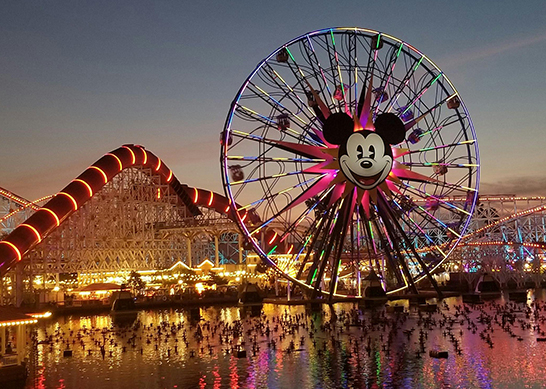 Pexels
Pexels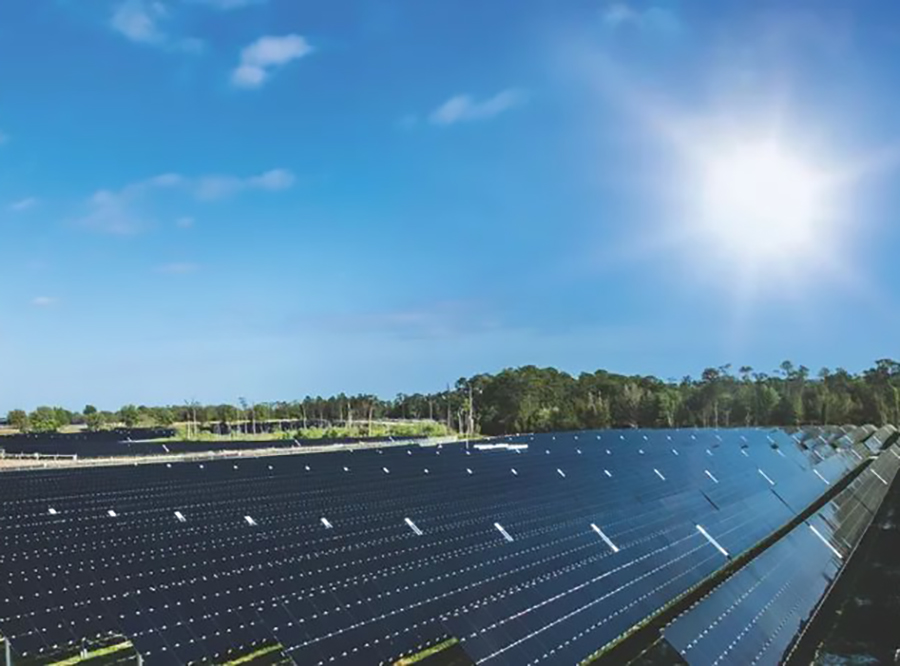 Walt Disney World Resort
Walt Disney World ResortBut the company’s most ambitious solar project right now is taking shape on the other side of the Atlantic, where Disneyland Paris is teaming up with Urbasolar to build one of the largest rooftop photovoltaic systems in Europe. This installation is expected to generate an output of 30 megawatts and produce around 31 gigawatt hours of electricity every year. The plan is to use nearly 68,000 PV modules to cover 9000 parking spaces while protecting guests and their vehicles against the elements. A special highlight will be an outline of Mickey Mouse shaped by part of the installation, which will only be visible from above at night.
‘Part of our DNA’
If you were to board the TGV InOui service at Gare de L’Est station in the French capital after visiting Disneyland Paris, the high-speed train would drop you right outside the Europa-Park Resort in Rust, Germany in just under three hours. Sustainability is also a priority here at Germany’s biggest theme park, which has been run by the Mack family ever since it first opened its doors in 1975. “Caring for the environment and sustainability aren’t a passing fad for us—they’re part of our family’s DNA. My grandparents and parents pursued the same approach,” said Europa-Park’s owner Roland Mack in the company’s Sustainability report.
“Caring for the environment and sustainability aren’t a passing fad for us—they’re part of our family’s DNA. My grandparents and parents pursued the same approach,”
– Roland Mack, Owner of the Europa-Parks in Rust
“Taking consistent action that benefits the environment also pays off financially over the long term.” Europa-Park is currently partnering with Mosolf, a logistics service provider for the automotive industry, to invest in a PV system covering more than 20 hectares (49 acres) on the company’s premises. “The system is set to go online in 2024. Europa-Park will be using a significant share of the energy generated and will have its own supply of renewable electricity that will allow it to be largely independent of other energy sources in the long run, especially during the busy summer months,” said Mack in a press release published by the company. The park is also involved in conservation efforts in the Elzwiesen nature preserve as well as promoting biodiversity and restoring historical meadow irrigation systems. Other steps the company is taking to conserve resources include water-saving technology in its hotels and Rulantica water park, recycling measures and the use of electric vehicles. Europa-Park is the first “green” theme park in the world, having been awarded the Green Amusement Park certificate by TÜV SÜD.
Upcycling at Tripsdrill
In addition to the big-name theme parks mentioned above, you’ll also find smaller parks that are making sustainability an integral part of their business. Hansa-Park, for example, understands firsthand that sound business, fun and a focus on the environment don’t have to be polar opposites. Opened in 1977 in Sierksdorf on the Baltic, the park follows a maritime design with rides and shows arranged in several different themed areas. Hansa-Park covers approximately 460,000 square meters (4,951,399 square feet) and has around 17,000 square meters (182,986 square feet) of covered spaces. The park has made sustainability a priority right from the start. Among the measures it has already adopted include a changeover to LED energy-saving light bulbs, a waste separation system and recycling station, zero use of pesticides, the use of rainwater to water the park’s plants and run its water rides, electric vehicles for logistics in the park, the installation of electric hand dryers, non-plastic cutlery and the provision of ten electric charging points for guests’ electric vehicles. In recognition of these efforts, the park has now been awarded the Germany’s Best in Sustainability seal by consumer ratings firm Germany Test for four years running and took first place in an industry rankings of Germany’s theme and amusement parks in 2023.
Founded in 1929, Germany’s oldest amusement park Tripsdrill, which is located in the Naturpark Stromberg-Heuchelberg nature reserve in Cleebronn, is a textbook example of the concept of sustainability. Tripsdrill attracts over 825,000 guests every year with more than 100 attractions across an area covering 77 hectares (190 acres). The park is home to Tripsdrill wildlife park and the 60-plus species of animals who live here and has been using green electricity across its premises since 2010. When planning new buildings, the park uses “original materials sourced from condemned buildings in the surrounding area where possible, such as sandstone, oak beams and rounded roof tiles,” noted Tripsdrill spokesperson Birger Meierjohann.
“In addition to giving our facilities an authentic look, upcycling these old building materials also saves resources.” Twenty shepherd’s wagons and nearly fifty treehouses provide overnight accommodation for guests at the entrance to Tripsdrill wildlife park—in an area providing habitat for not only foxes and hares but also lynxes and wolves. If only operators at large theme parks would see it the same way: Sometimes, less really is more. After all, the most environmentally friendly footprint any company can have is always the one that leaves the fewest traces.
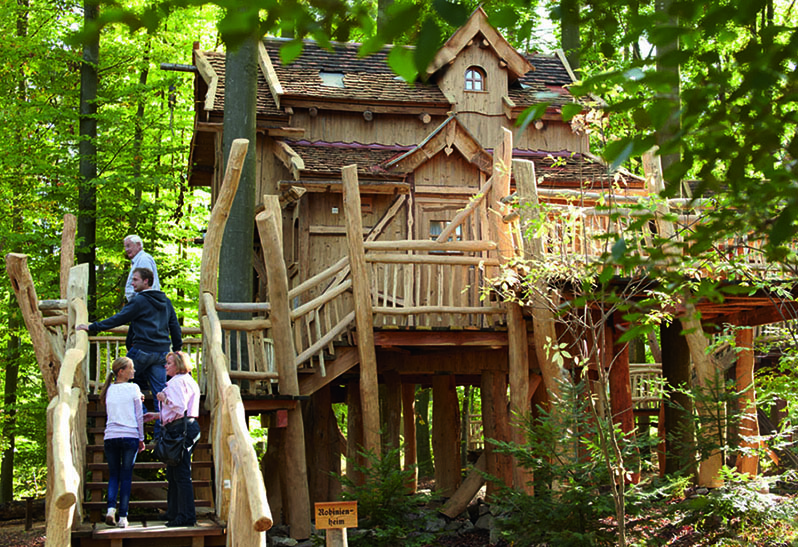 Erlebnispark Tripsdrill GmbH & Co. KG
Erlebnispark Tripsdrill GmbH & Co. KG

